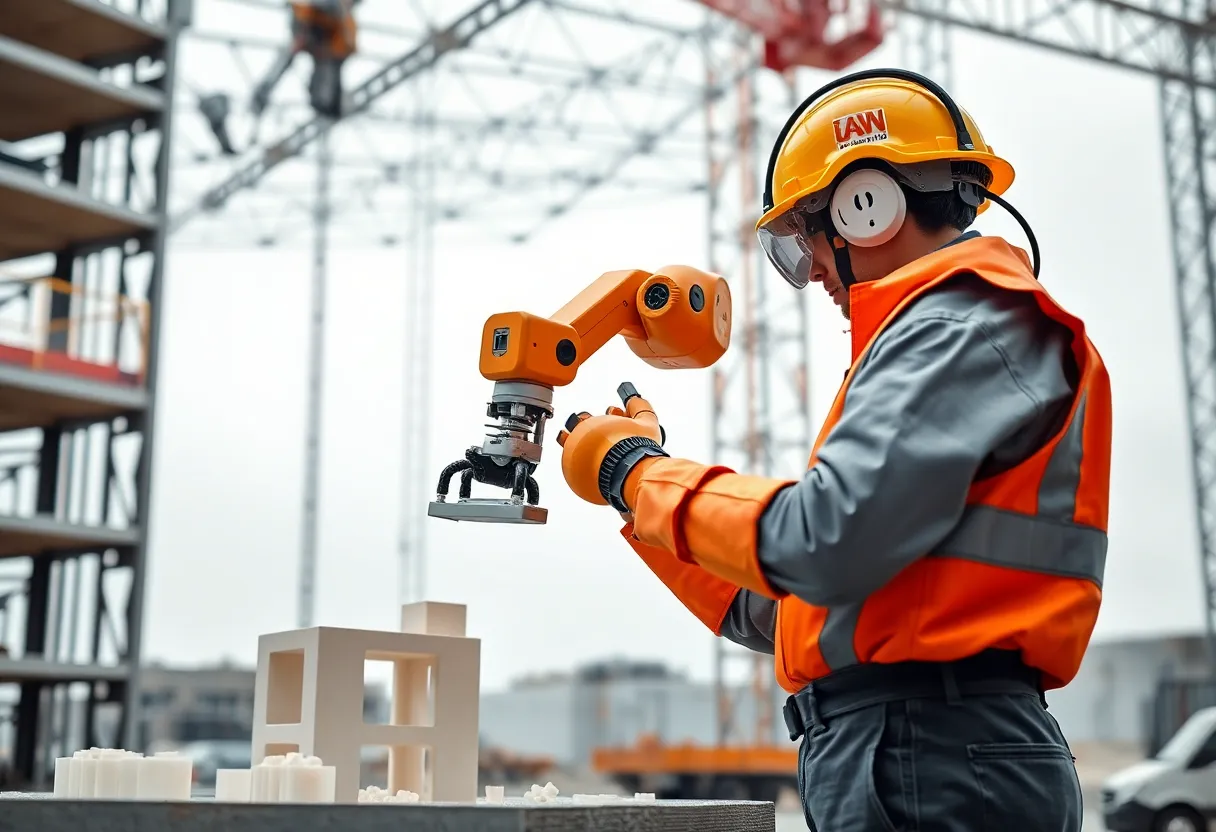News Summary
The construction industry is rapidly evolving with advancements in 3D printing and worker safety technologies. These innovations promise to enhance efficiency and safety on job sites, paving the way for a more streamlined construction process. Notable applications include the use of 3D printing in home building, while new safety systems are being deployed to reduce accidents. As companies embrace these technologies, the future looks promising for both construction and worker safety.
Revolutionizing Construction: The Impact of 3D Printing and Enhanced Worker Safety Technology
The construction industry is undergoing significant changes thanks to advancements in technology that enhance efficiency and worker safety. Modern tools, from simple hammers to complex drafting software, continue to play a vital role in completing construction projects. However, the integration of 3D printing and advanced safety systems is shifting the paradigm of construction practices.
A Changing Landscape in Construction
Currently characterized as fragmented due to a variety of companies and trades involved, the construction industry is slowly evolving. Experts believe that automation is a growing trend that could unify practices and significantly improve outcomes in construction projects. The potential of 3D printing could revolutionize the way buildings are erected, offering faster and more efficient methods.
The Rise of 3D Printing in Construction
While 3D printing technology has been available for several years, its application in construction is gaining traction. Consumer-grade printers are now affordable, costing only a few hundred dollars. However, larger-scale applications require advanced software that adapts digital models specifically for the printing workflow. This often involves using a robotic arm that constructs building components layer by layer, predominantly using concrete as the primary medium.
Challenges in 3D Printing
Despite the advantages, 3D printing with concrete presents various challenges, particularly regarding precision and environmental factors. Research initiatives, like those at ETH Zurich, have introduced methods that utilize dry materials to enhance the accuracy of the printing process. Notably, organizations like Habitat for Humanity have demonstrated the viability of this technology, utilizing a 3D printer to create over 70% of a 1,738-square-foot home, including all of its walls. This partnership shows the potential of 3D printing, despite challenges such as premature drying of concrete due to specific climate conditions.
Sustainability and Energy Efficiency
The construction sector is also exploring the use of geopolymer concrete to provide sustainable printing solutions aimed at reducing carbon footprints. Furthermore, incorporating phase change materials into building designs can significantly enhance insulation properties, leading to reduced energy loads for heating and cooling. Such innovations could lead to a more environmentally conscious construction industry in the future.
Prefabrication and Efficiency
Many companies view 3D printing as a pathway to prefabricating construction components off-site, thus enhancing the overall efficiency of the building process. However, achieving the intricate details required for facades remains challenging with current technology. Nevertheless, experts affirm that 3D printing can dramatically improve construction efficiency, reducing labor requirements while accelerating the fabrication process.
Enhancing Worker Safety with Technology
In addition to 3D printing, innovative safety technologies are being implemented to create safer working environments in construction. Sunstate Equipment has taken strides in improving driver safety by deploying the Driver•i D-450 platform across its service vehicle fleet. This system provides a comprehensive 270-degree view using a four-camera array equipped with artificial intelligence features to alert drivers to potential hazards.
Focus on Driver Awareness
The focus of such safety systems extends beyond mere surveillance. They aim to build a culture of safe driving, rather than purely penalizing mistakes. When drivers exceed speed limits, they receive multiple warnings before any incidents are recorded for review, promoting a proactive approach to safety. The Driver•i system is designed to act as a “driving partner,” helping operators remain vigilant in today’s fast-paced and often distracting driving environments.
Successful Safety Implementation
Realizing the full potential of safety technologies requires full commitment from both management and staff to foster an atmosphere of trust and ensure operational consistency. Recognizing safe driving habits and rewarding exemplary behaviors is also a key component of these systems.
Conclusion
The construction and transportation sectors are experiencing transformative changes through continuous advancements in 3D printing and safety technologies. As these innovations reshape the landscape, they promise to enhance worker efficiency and ensure safer environments across construction sites.
Deeper Dive: News & Info About This Topic
Additional Resources
- AZ Big Media: How 3D Printing and AI Is Changing the Construction Industry
- TCT Magazine: 3D Systems, Penn State and NASA Thermal Management
- Voxel Matters: Researchers 3D Print Longer-Lasting Wearables for Health Monitoring
- AZ Family: Feds Cracking Down on 3D-Printed Machine Gun Conversion Devices
- Arizona Digital Free Press: World’s Largest 3D-Printed Neighborhood Nears Completion in Texas
- Wikipedia: 3D Printing
- Google Search: 3D Printing Construction
- Google Scholar: 3D Printing Technology
- Encyclopedia Britannica: 3D Printing
- Google News: 3D Printing in Construction
Author: Construction CA News
The CALIFORNIA STAFF WRITER represents the experienced team at constructioncanews.com, your go-to source for actionable local news and information in California and beyond. Specializing in "news you can use," we cover essential topics like product reviews for personal and business needs, local business directories, politics, real estate trends, neighborhood insights, and state news affecting the area—with deep expertise drawn from years of dedicated reporting and strong community input, including local press releases and business updates. We deliver top reporting on high-value events such as the Rose Parade, Coachella, Comic-Con, and the California State Fair. Our coverage extends to key organizations like the California Building Industry Association and Associated General Contractors of California, plus leading businesses in technology and entertainment that power the local economy such as Apple and Alphabet. As part of the broader network, including constructionnynews.com, constructiontxnews.com, and constructionflnews.com, we provide comprehensive, credible insights into the dynamic landscape across multiple states.




